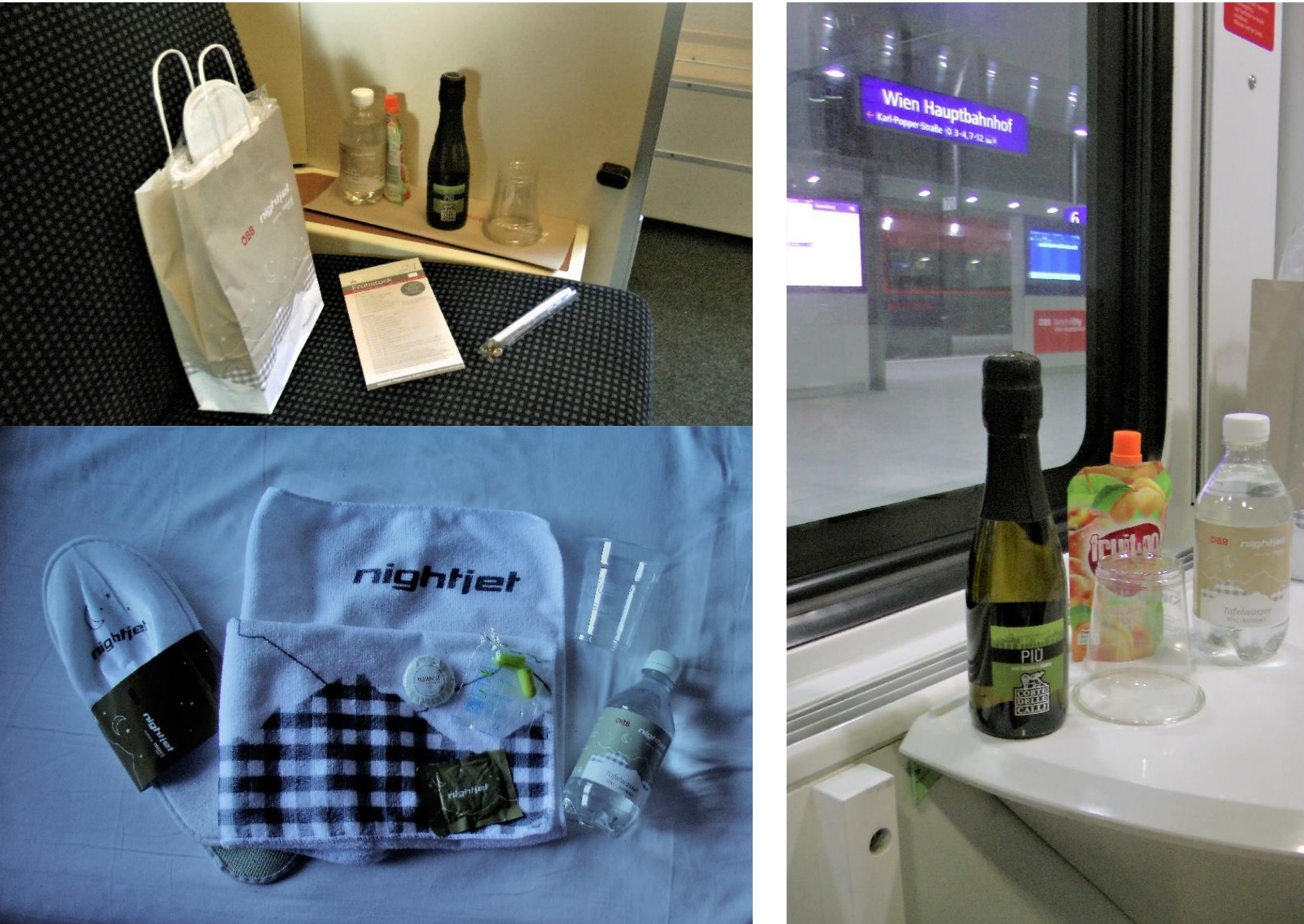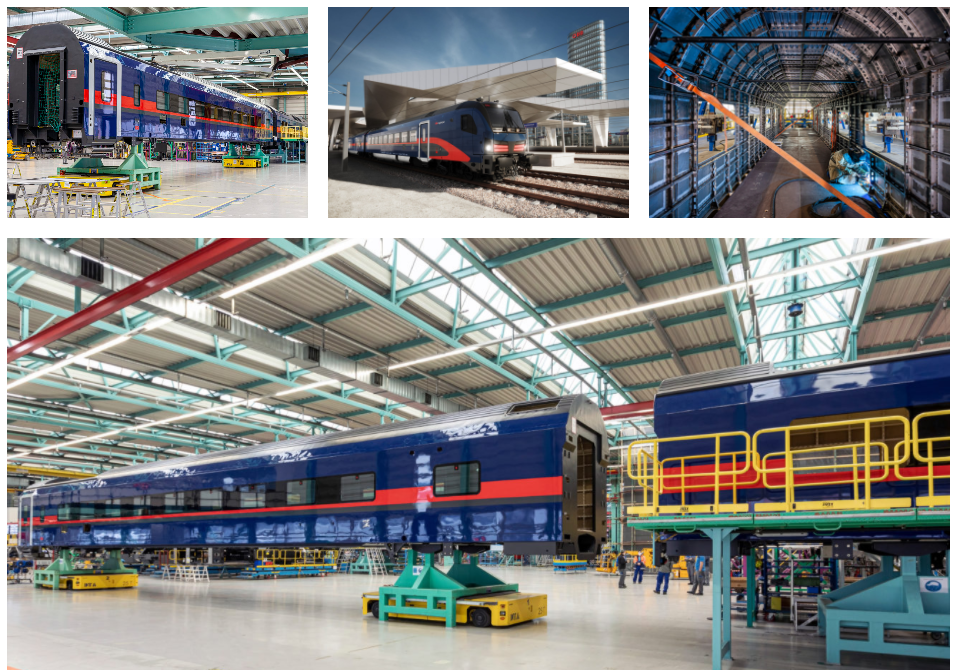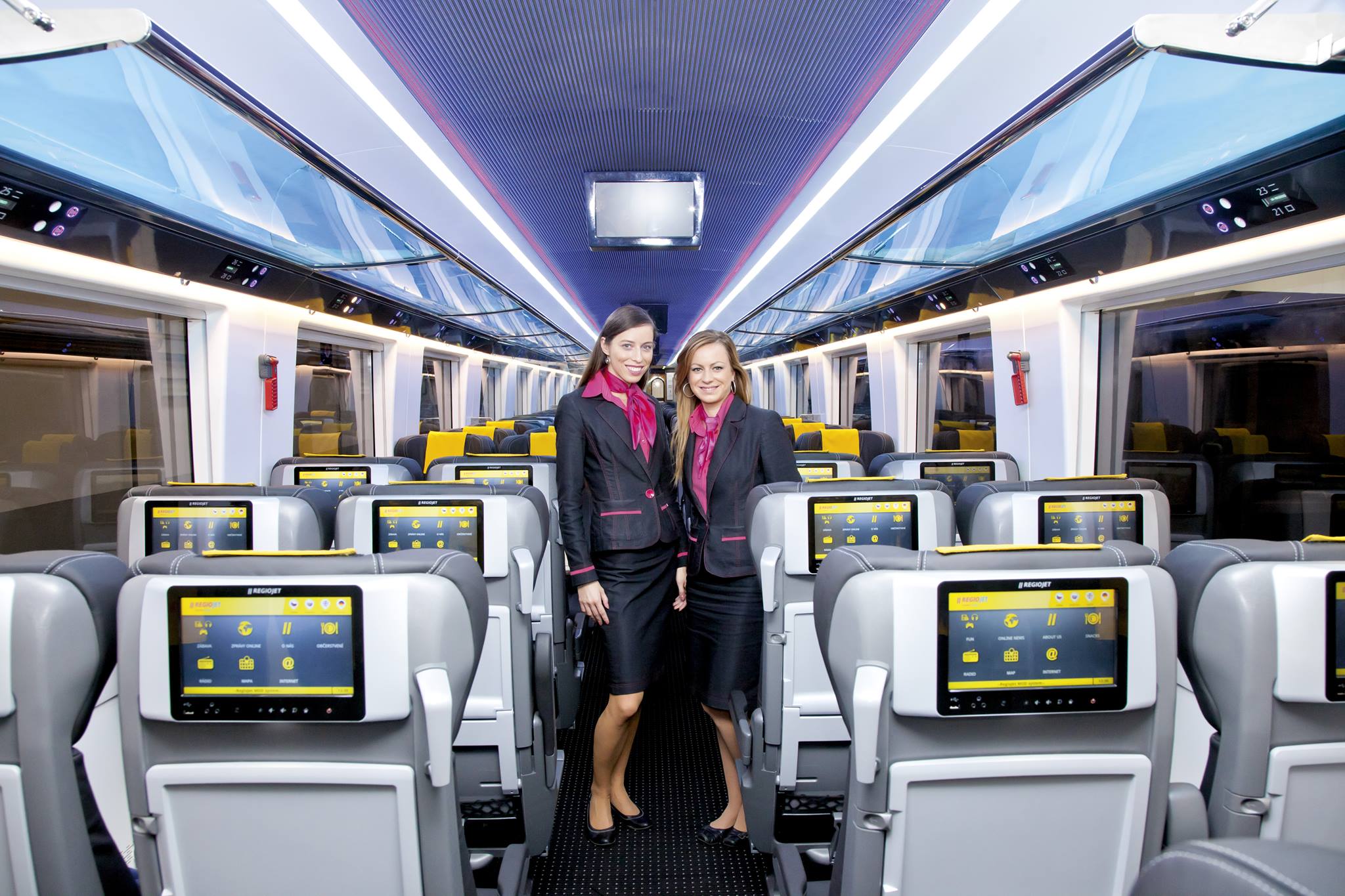By Frédéric de Kemmeter – Railway signalling and freelance copywriter – Suscribe my blog
19/12/2021 – (Version en français)
🟧 Back to homepage 🟧 See our brief news
It has been five years since night trains got an unexpected boost. This is not due to the recent rebound of the climate cause but rather to a well thought-out model of night trains that is clearly customer-oriented.
Who could still believe it in 2016? That year was the death and life of the night train. On the one hand, Deutsche Bahn announced the end of its night train operations, while the German model was thought to be rather promising.
On the other hand, the Austrian operator, then little known in Europe, announced that it wanted to take over some of the night trains that DB was abandoning. It did so on the evening of 11 December 2016, under a still unknown brand, Nightjet.
Nightjet is not a private company, but runs its entire business without ‘real’ subsidies, at market prices and without public service obligations. However, the word subsidy should be translated with caution, because in Austria the government still gives the ÖBB a basic remuneration on national night train routes.
Pragmatism
Kurt Bauer, the head of long-distance traffic at the ÖBB, stressed to Die Zeit in December 2017 that he is not nostalgic for the night train: ‘I am only an economist‘. With his true entrepreneurial style, he explains that ‘the failure of the Germans was an opportunity for the ÖBB‘. The ÖBB had to decide: ‘Do we also want to abolish our night trains, or at least massively reduce them, or do we want to run away?‘ The analysis of the opportunities and risks revealed that the opportunities outweighed the risks.
He also explains the challenge in 2016 : ‘for us it was no small matter and DBAG forced us to take over some trains, because we used to produce many trains together with our German colleagues.‘ To understand: the ÖBB had already been operating the Vienna-Hamburg and Vienna-Dortmund trains under the EuroNight (EN) brand during the time with cooperation with Deutsche Bahn. So they knew the customers and the tricks of the trade well. The same goes for the Vienna-Zurich route.
The only thing left to do was to recreate a « pure ÖBB » network, which had necessarily been reduced as a result of the disaffection of Germans. ‘The economic aspect is only one side of the coin. In the railways, the question of production is just as important,‘ says Kurt Bauer. For this reason, the ÖBB gave priority to north-south routes, where the train rotations could be optimally combined from the point of view of maintenance, service and on-board staff working hours.
Thus, in addition to the Italian and German destinations, Switzerland was a central part of the ÖBB night train network from the outset. After Vienna, Zurich is the second largest night train hub in Europe. According to Kurt Bauer, there are several reasons for the inclusion of Switzerland: ‘It is a country that has a great affinity with our trains and is willing to pay.‘
A marketing tool
The ÖBB doesn’t hide it: the night train business is ‘more than just a product. For a small railway company like ÖBB, it was a unique opportunity to position itself internationally. (…) We knew that this was a unique opportunity. It is now or never to be represented in Europe.‘
Andreas Matthä, CEO of the Austrian Railways, confirms that the Nightjet night trains bring extensive publicity to the company: ‘We bring Austrian hospitality to Europe and it is important that the population becomes aware of climate-friendly alternatives.‘ The big boss has never hesitated to take part in the launch of the first train when a new route is opened. He has been seen successively in Brussels, Amsterdam and, recently, Paris.

A sustainable model
One of the great successes of the Austrians was their concern to bring together several types of clientele in a single train. Seats for the low-cost travellers, berths for those seeking a minimum of comfort and above all the sleeping car for those who want a hotel on board. All this with breakfast included in the price, except for the seats class.
It’s a winning formula. In December 2019, in an interview in the Neue Zürcher Zeitung, Andreas Matthä reported that ‘the number of our passengers has increased significantly this year, with a 20% increase between Vienna and Zurich and a good 10% between Berlin and Zurich. The climate talks are helping us.‘ These two routes are among the most profitable of all Nightjets.
It has to be said that the Austrians have the clientele with them. A clientele with more purchasing power in the Alpine regions than in the rest of Europe. Zurich and Vienna are rather chic but also expensive cities. And Berlin is increasingly becoming a trendy and expensive city. All this helps to fill the « fat part » of the Nightjets: the sleeping cars, which represent the most expensive comfort, are ‘almost always full,‘ according Matthä.
Low cost lags behind
Government subsidies play a certain role in the profitability of the Austrian market. For early morning and late evening seats, the ÖBB receives public service contracts from the state on Austrian routes only, which the Nightjets between Vienna and Passau, Salzburg, Tarvisio or Bregenz, to name but a few border points, are perfectly capable of performing.
These subsidised services are very well timed because, despite their excellent marketing, the ÖBB is feeling the competition in the seat segment: these customers are looking mainly at the price and comparing it to the offers of low-cost airlines and long-distance buses. ‘In this segment we compete on price and offer seats from 29 euros,‘ explains Matthä.
To go to Amsterdam or Paris, the ÖBB has put the bill on the table, because these destinations also extend the working hours of the staff. Dutch gouvernement, for example, paid 6.4 million euros for the four years that the Vienna-Amsterdam route ran on Dutch territory.
But are Nighjets profitable? There is little discussion on the subject at the ÖBB, and Andreas Matthä says soberly: ‘We are not becoming a billionaire with the night train business, but we are making a very little profit.‘ That was before the pandemic, and it remains to be seen what the situation is now with the constant stop-and-go traffic that has been experienced in international traffic for almost two years now.
The future looks promising with the order for 13 7-car trainsets. The cars are currently being tested. The main innovation is the introduction of individual « sleeping capsules ». The sleeping cars would all have their own cabins with private shower and toilet. This indicates a price increase for this type of travel.
For the time being, Nightjets trains remain the best reference in Europe.

19/12/2021 – By Frédéric de Kemmeter – Railway signalling and freelance copywriter
Suscribe my blog
Related topics:
 Nightjet : renaissance of night trains in Europe
Nightjet : renaissance of night trains in Europe
04/29/2019 – While Britain is putting new night trains into service between London and Scotland, we can already see what is happening in Central Europe. Nightjet shows that a good night train services and a good business model can generate revenues and profits.
 A pool of vehicles could facilitate access for operators of pulled trains
A pool of vehicles could facilitate access for operators of pulled trains
10/26/2020 – One of the problems facing new entrants is the acquisition of rolling stock. Leasing formulas exist for traction equipment, but less so for pulled equipment. This can be an obstacle, especially for night trains.
 Moving from product to customer: can rail learn from Gafam?
Moving from product to customer: can rail learn from Gafam?
20/06/2021 – Moving from a « product » policy to a « customer » policy is a real challenge for rail. The weight of assets (trains-infrastructure) and cultural habits still largely shape rail policy, but there are, however, some reasons for hope.
 Spain stops some of its night trains
Spain stops some of its night trains
05/26/2020 – According to the local press, the Renfe is planning to stop its “trenhotel” night train between Barcelona, Madrid and Vigo/La Coruña, when traffic in Spain is allowed to resume.


Vous devez être connecté pour poster un commentaire.